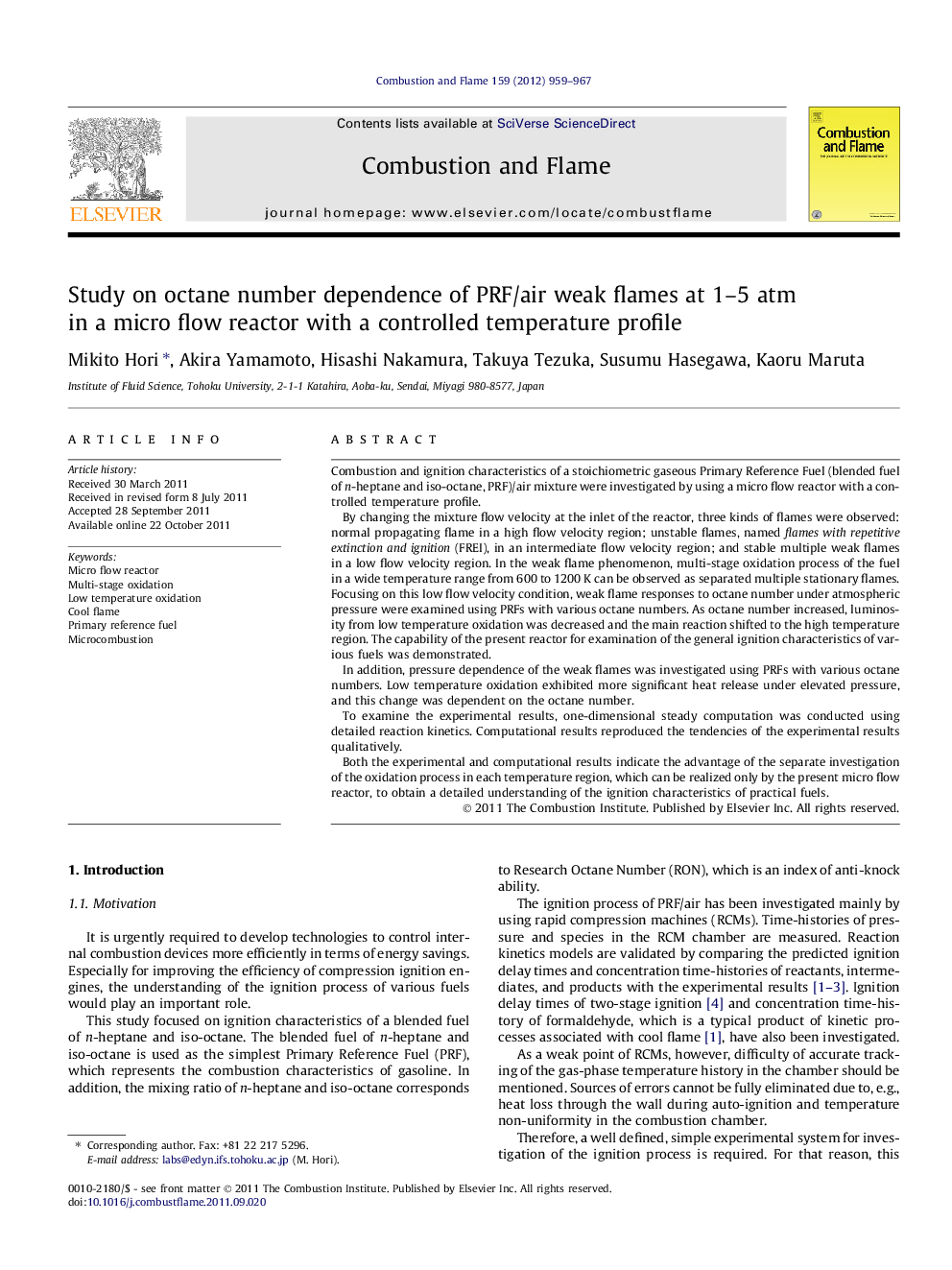| کد مقاله | کد نشریه | سال انتشار | مقاله انگلیسی | نسخه تمام متن |
|---|---|---|---|---|
| 169035 | 457973 | 2012 | 9 صفحه PDF | دانلود رایگان |

Combustion and ignition characteristics of a stoichiometric gaseous Primary Reference Fuel (blended fuel of n-heptane and iso-octane, PRF)/air mixture were investigated by using a micro flow reactor with a controlled temperature profile.By changing the mixture flow velocity at the inlet of the reactor, three kinds of flames were observed: normal propagating flame in a high flow velocity region; unstable flames, named flames with repetitive extinction and ignition (FREI), in an intermediate flow velocity region; and stable multiple weak flames in a low flow velocity region. In the weak flame phenomenon, multi-stage oxidation process of the fuel in a wide temperature range from 600 to 1200 K can be observed as separated multiple stationary flames. Focusing on this low flow velocity condition, weak flame responses to octane number under atmospheric pressure were examined using PRFs with various octane numbers. As octane number increased, luminosity from low temperature oxidation was decreased and the main reaction shifted to the high temperature region. The capability of the present reactor for examination of the general ignition characteristics of various fuels was demonstrated.In addition, pressure dependence of the weak flames was investigated using PRFs with various octane numbers. Low temperature oxidation exhibited more significant heat release under elevated pressure, and this change was dependent on the octane number.To examine the experimental results, one-dimensional steady computation was conducted using detailed reaction kinetics. Computational results reproduced the tendencies of the experimental results qualitatively.Both the experimental and computational results indicate the advantage of the separate investigation of the oxidation process in each temperature region, which can be realized only by the present micro flow reactor, to obtain a detailed understanding of the ignition characteristics of practical fuels.
Journal: Combustion and Flame - Volume 159, Issue 3, March 2012, Pages 959–967